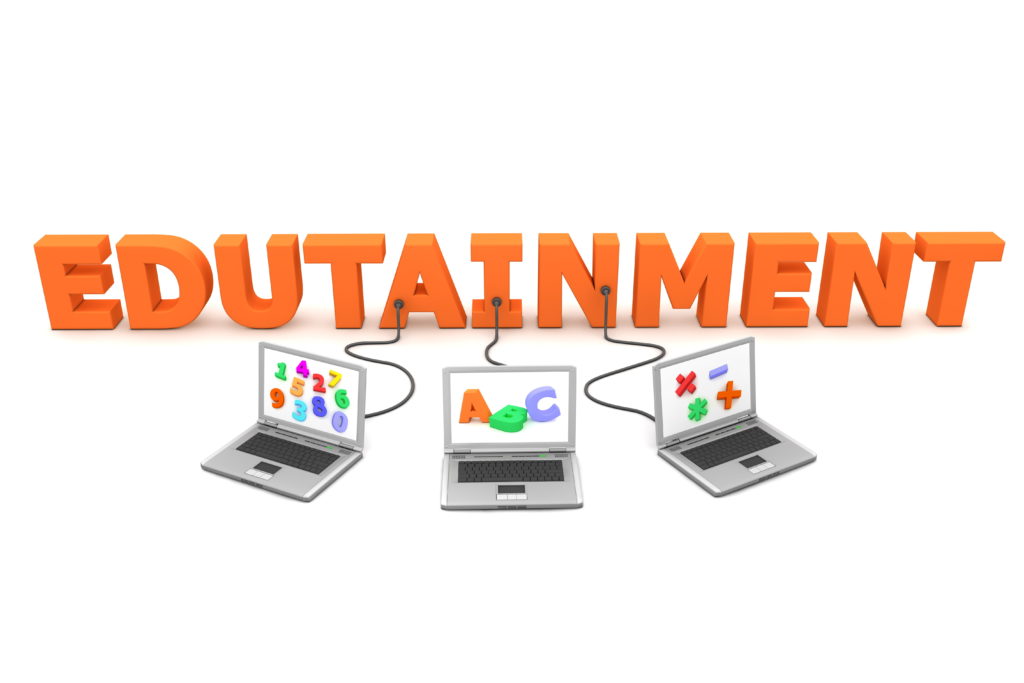The Future Of Edutainment

The events that have taken place in the past one year have made us rethink our way of living and the sustainability as well as flexibility of systems that we have created over the years. The pandemic saw schools here in Kenya close for over 10months; a move that the entire country was not prepared for.
This meant that parents were now playing the role of teachers, playmates, educators, nurses, the list is endless.
The pandemic has magnified the need for more children’s content that is not only fun but educative. This is what is referred to as EDUTAINMENT.
Here are our thoughts on the Future of Edutainment:
1. Edutainment needs to address real-life issues in addition to curriculum-based material:
The aim here is to help children grow up to become well-rounded and wholistic individuals.
While teaching children Mathematics and Science concepts is very important; we cannot neglect addressing key issues such as social justice, social-emotional learning, identity development as well as mental health. These issues are not new to us, but the pandemic magnified the need to have conversations and finally address them.
While they may be considered ‘difficult’ topics for a child to understand, they are equally necessary conversations to start having with children. What matters is that the content and context is age-appropriate. We have seen a number of children’s channels successfully have conversations around the same. Here are some examples:
-A short, clear and precise blog on what consent looks like for children by Akili Kids!inspired by an episode from Ubongo Kids, a show that airs on the station.
-A beautiful conversation by PBS Kids on Race, Racism and Identity.
2. We need to have more safer edutainment destinations for our children.
Children of today have more options and more control of their programming choices which was definitely not the case for most of us growing up. Kids today manoeuvre from one platform to another; YouTube, children’s apps, livestreams just to name but a few. While this is great in terms of having multiple learning avenues, this unfortunately increases the chances of your child being exposed to harmful content for instance advertisement, while on these platforms.
That is why is it important to have platforms that are dedicated and committed to solely producing children’s content. A good example is Akili Kids! which has a comprehensive protective advertising policy.
This leads us to our third observation and recommendation.
3. Addressing the growing rift brought about by Media and Technological Advancement.
There have been debates on the rifts that technology and media have created amongst families. At one point or another, we’ve been in situations whereby, we are all at home with our loved ones, but everyone is busy on their phone, laptop, TV or tablet.
So how do we ensure that this rift does not grow any bigger? We produce content that is dedicated for children but is ideal for the entire family. In simple terms, content that encourages co-viewership.
Co-viewership creates an opportunity for parents/guardians to bond with their children and strengthen family ties.
4.Creation of Content that depicts reality of the target audience.
Before Akili Kids! there was no station catering to the needs of over 20million Kenyan children. Most of us grew up watching children’s content from the West. We could barely relate to the experiences depicted in those shows. Those were not and would probably never be our lived experiences.
Moving forward, creators of children’s content have to take into consideration the culture and way of life of their target audience. Make the content as relatable to the child as possible.
Akili Network has been able to partner creators of children’s content such as Ubongo Media to air Ubongo Kids and Akili and Me, Paukwa House to bring HummingBird Tales to Kenyan children and Impact(Ed) International to bring My Better World. These are shows that are relatable to Kenyan children.
5. Inclusive Edutainment
Again, the pandemic; it showed us how disproportionately affected some communities were by the directive to have students continue learning from home. This is because of lack of access to internet services and even electricity! So how do we make edutainment accessible to all children and especially those from low income households that cannot afford internet bundles or cable tv?
Akili Network the creators of Akili Kids! have set an example for us all! The channel is free to air and does not require one to have any Pay TV to access it! We need to continue looking for more ways to edutainment more accessible to children from all households!
As much as there is a lot that still needs to be done, it is important to recognize the efforts being made to promote locally produced children’s content. There has also been increased efforts by the Communications Authority of Kenya to ensure that media houses are airing content that is appropriate and adheres to the set ground rules. This is an indication that we are on the right track and a step closer to achieving better edutainment for the Kenyan child.
